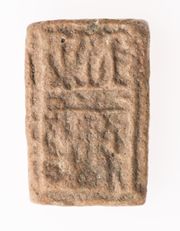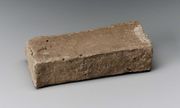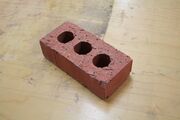Brick
Description
A hardened, rectangular, man-made block used since ancient times as a building and paving material. Bricks were used as the chief building materials, especially in many regions where wood was scarce, such as Mesopotamia, Persia, Palestine, China and in pre-Columbian Americas. They were originally made with mixtures of Mud (Clay and Sand), pressed into a molds then dried in the sun (see Adobe). Beginning in Roman times, bricks were baked in a kiln. Bricks can contain clay, sand, Calcium carbonate, iron oxides and refractory fillers. They are durable, resist moisture and provide insulation. Bricks are a common and versatile building material that can also be used for decoration.
An example mixture of components for a fired brick is:
- Silica (sand) – 50% to 60% by weight
- Alumina (clay) – 20% to 30% by weight
- Lime – 2 to 5% by weight
- Iron oxide – ≤ 7% by weight
- Magnesia – less than 1% by weight
Synonyms and Related Terms
brickwork; mudbrick (unfired); fired brick; brique (Fr.); tijolo (Port.);
Physical and Chemical Properties
- Density = 1.4-2.2
Resources and Citations
- Claudia Kavenagh, George Wheeler, 'Evaluation of Cleaning Methods for the Exterior Brick at the Brooklyn Historical Society' JAIC, 42(1), 2003.
- Thomas Gregory, The Condensed Chemical Dictionary, Reinhold Publishing, New York, 3rd ed., 1942
- G.S.Brady, Materials Handbook, McGraw-Hill Book Co., New York, 1971 Comment: p. 123
- Dictionary of Building Preservation, Ward Bucher, ed., John Wiley & Sons, Inc., New York City, 1996
- A.Lucas, J.R.Harris, Ancient Egyptian Materials and Industries, Edward Arnold Publishers Ltd., London, 4th edition, 1962
- The American Heritage Dictionary or Encarta, via Microsoft Bookshelf 98, Microsoft Corp., 1998
- CRC Handbook of Chemistry and Physics, Robert Weast (ed.), CRC Press, Boca Raton, Florida, v. 61, 1980 Comment: density=1.4-2.2
- Wikipedia: Brick Accessed March 2025


